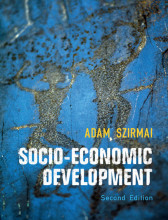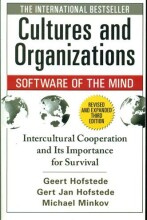Summary: Socio-Economic Development | 9781316240182 | Adam Szirmai
- This + 400k other summaries
- A unique study and practice tool
- Never study anything twice again
- Get the grades you hope for
- 100% sure, 100% understanding
Read the summary and the most important questions on Socio-Economic Development | 9781316240182 | Adam Szirmai
-
1 Dissufion of generalisations on development
This is a preview. There are 1 more flashcards available for chapter 1
Show more cards here -
Discuss the relationships between economic growth and development.
Growth of national income is necessary for development. But development is more than economic growth alone:
- reduction of poverty
- Increased economic welfare
- Improved health and education
- Increased political and social freedom -
Is development possible without economic growth?
No, sustainable large-scale poverty reduction not possible.
If productive capacity stagnates, developing country remains dependent on external aid.
But, economic growth doesn't mean improved standards of living so social indicators: e.g. life expectancy, literacy, infant mortality, education -
Why are Saudi Arabia and Kuwait still considered to be developing countries?
-They are oil exporting countries.
-Even though they are HIC’s, the one-sided structure of their economy makes them extremely depending on a single export product: oil/gas
-The challenge is to create structural transformation to a more diversified economy -
What are the most important dimensions along which developing countries differ from each other? Is the term third world justified in the light of these differences?
Differences:
- Levels of per capita income - between and within countries
- Demographic differences - e.g. population size
- Natural resources - oil exporting or importing
- Structure of the population - agriculture vs industry
- Economic regime - inward vs outward looking
- Colonial experiences
- Pre-colonial history - culture and religion
- Economic dynamism - growth vs stagnation
- Regional characteristics
Third world: developing countries have common characteristics and huge gap between third world and industrialized countries. -
What are the main drawbacks of the use of GNP per capita as an indicator of economic development?
-Output of the informal sector is not incorporated into GNP
- It doesn’t account for the distribution of income and consumption, which is very unequal
-Level of national income is not directly related to standard of living
-Social indicators are missing
Doesn’t include environmental pollution, depletion of resources, climate change -
Is the inequality between rich and poor countries increasing or decreasing over time?
It is increasing. Ratio between richest country in PPP terms in 2012 (Norway) and the poorest country (the Democratic Republic of Congo) is 172 to 1.
- In 1820, the ratio of per capita incomes of Western countries vs developing countries was 2 to 1
Bottom billion: haven't been growing as fast as majority of developing countries, leads to further divergence -
To what extent is there an unsurmountable gap between rich and poor countries in the world economy?
No insurmountable gap - transition from developing countries can occur in a few generations -
Why is the degree of world income inequality measured at PPP’s lower than that measured at exchange rates?
Exchange rates don’t provide adequate measures of purchasing power of currencies, e.g. you can buy a lot more with 1 dollar in Congo than in Australia. -
What are the main trends in global poverty, and how do these trends differ from region to region?
Common characteristics of developing countries are:
- Widespread poverty and malnutrition
- Large share of agriculture in output and employment
- Rapid growth of population
- Political instability
- Environmental degradation
- Low levels of technological capabilities
Poverty primarily in Sub-Saharan Africa and Asia
Economic stagnation in Africa due to civil wars - because of recent emergence of modern states
Latin America's development has distributive issue -
2 History of economy
This is a preview. There are 5 more flashcards available for chapter 2
Show more cards here -
List the most important characteristics of the concept of international economic order. Discuss the six types of international economic order which can be distinguished since 1450.
Characteristics of international economic orders:
-Flow of goods
-Financial flows
-Flows of people (both voluntary and involuntary)
-Flows of knowledge
Other important characteristics:
-Intensity of economic relationships between the various regions.
-Relations of dependence between countries and regions.
-The institutional framework of the economic and political relations between countries and regions
-Differential patterns of growth and stagnation in various parts of the world economy
-The size of the income gaps between regions and countries
- Higher grades + faster learning
- Never study anything twice
- 100% sure, 100% understanding

































